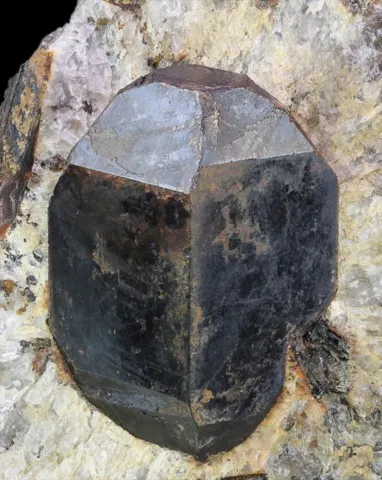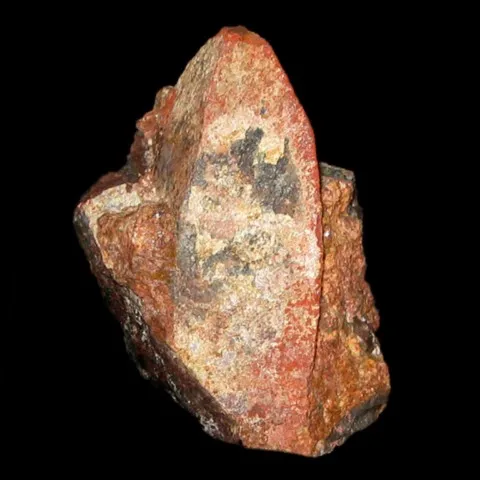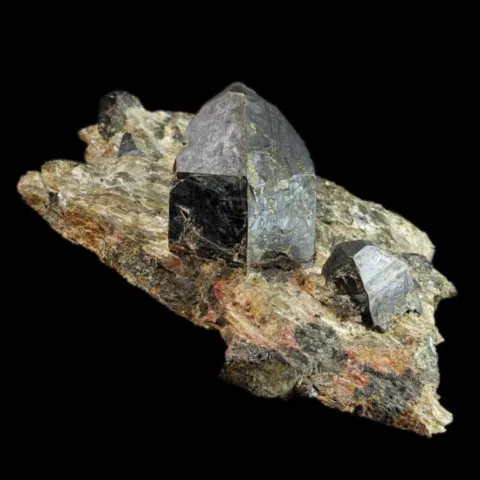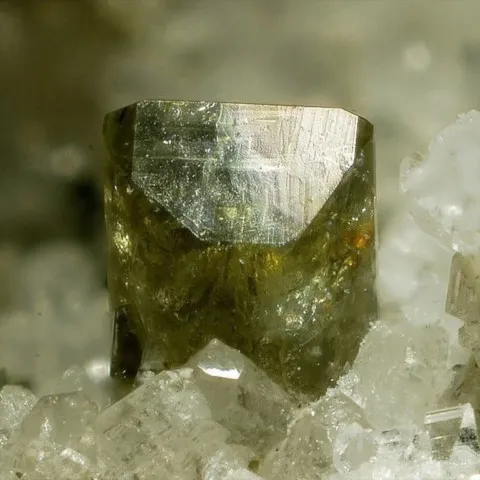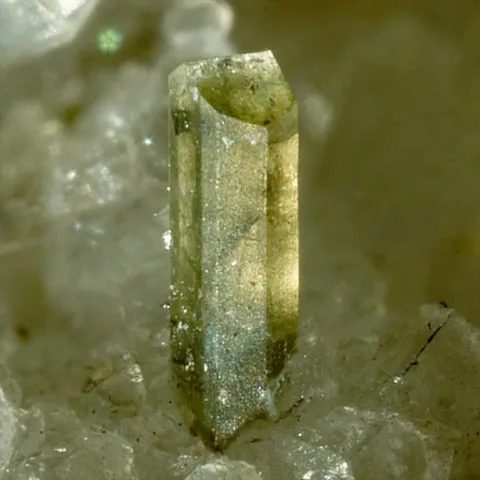GADOLINITE
Class : Silicates
Subclass : Nesosilicates
Crystal system : Monoclinic
Chemistry : Y2FeBe2Si2O10
Rarity : Uncommon
Gadolinite is a rare mineral found in syenites and alkaline pegmatites, where it can form considerable masses. As in most rare earth minerals, substitutions are common and important : Y is thus commonly replaced by Ce, La, U and Th, the latter two being responsible for the metamict state of many crystals. Gadolinite is now considered as a group consisting of gadolinite-(Ce) and gadolinite-(Y), depending on the dominant element. It was named in honor of the Finnish chemist Johan Gadolin who discovered yttrium and isolated gadolinium oxide. Gadolinite is extremely rare in short prismatic crystals, and usually occurs in masses, shapeless blackish-brown or black grains, often hematized in pegmatites, sometimes green. It alters in outcrops with the release of rare earths. Gadolinite is an ore of yttrium, a powerful neutron absorber widely used in the nuclear industry, as well as several rare earths (lanthanum, cerium, dysprosium, gadolinium, etc.) whose nature varies depending on the deposit.
Main photo : Gadolinite from Iveland, Agder, Norway © Geologisk Museums Venneforening, Oslo
Gadolinite in the World
Twinning
No twin known for this mineral species.
Fakes and treatments
No fakes recorded for this mineral species.
Hardness : 6.5 to 7
Density : 4.36 to 4.77
Fracture : Irregular to conchoidal
Streak : Grayish-green
TP : Opaque
RI : 1.770 to 1.820
Birefringence : 0.050
Optical character : Biaxial +
Pleochroism : None
Fluorescence : None
Solubility : Hydrochloric acid
Magnetism : None
Radioactivity : Very low

